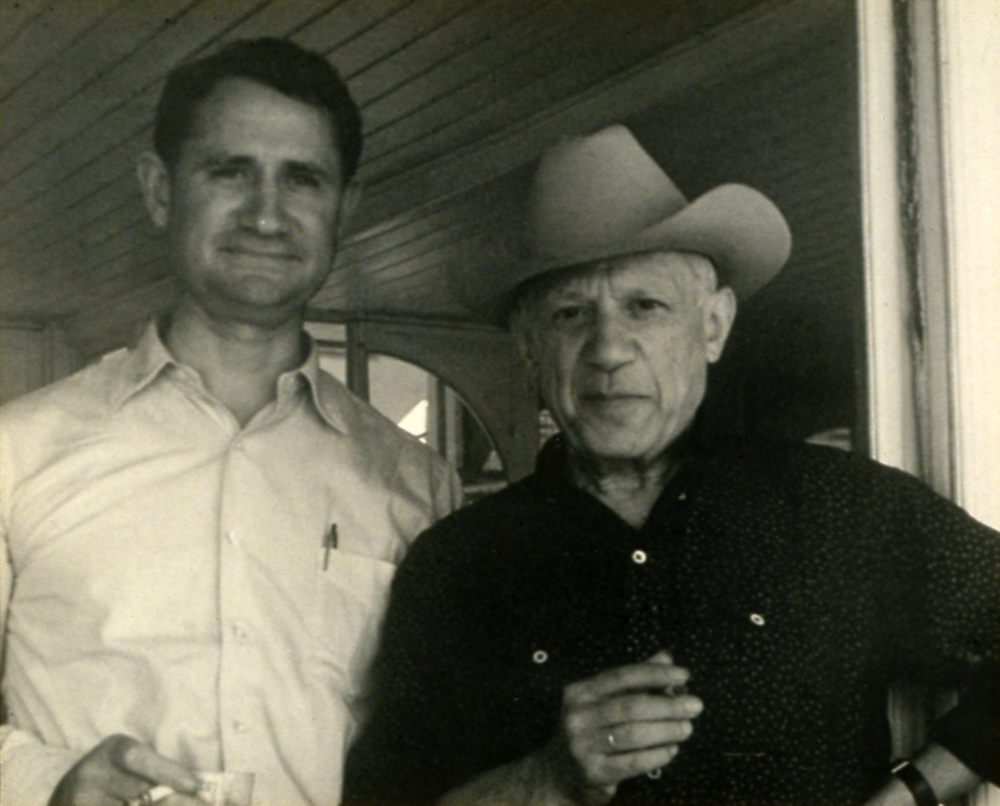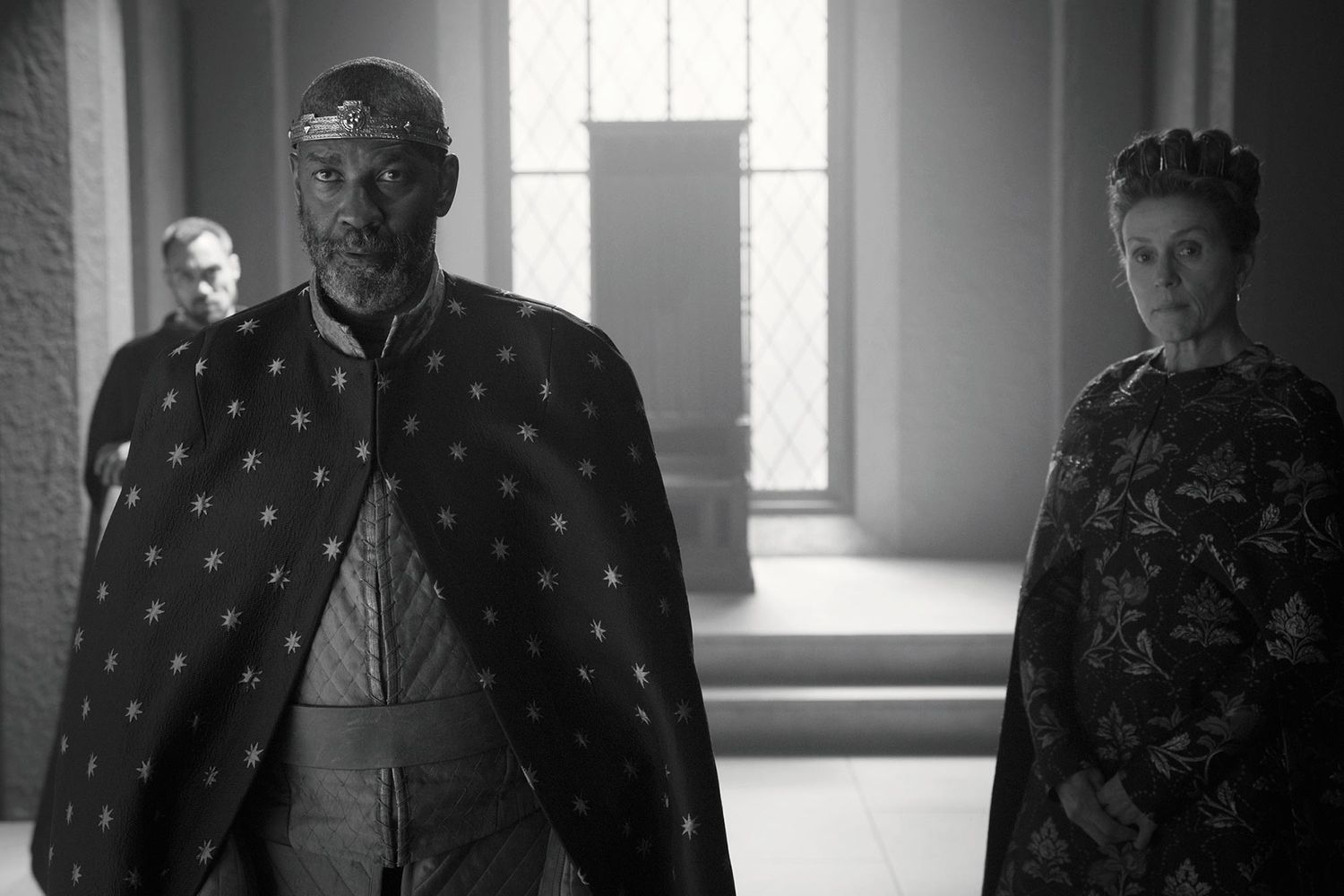
Art, Design & Architecture Museum Focuses on War, Friendship, and Architectural Visions Unrealized
A unique friendship between two artists — Channing Peake and Pablo Picasso — highlights one of three exhibition opening July 13 at the Art, Design & Architecture Museum at UC Santa Barbara.
Through paintings, prints, sculptures, drawings, paintings, and ephemera from the 1940's through the 1960's, "Peake/Picasso" examines similarities in the artists' painting practices, and their shared love of abstraction. They also shared an interest in the American west, and that served as an important lynchpin in their relationship, according to Elyse Gonzales, the museum's curator of exhibitions.
In Peake, who owned and operated a working ranch in the Santa Ynez Valley, Picasso found not only a fellow artist with whom he could discuss art, but an embodiment of the mythical American west — the cowboy he had long admired from films and tales of the west. From 1939-1959, Peake maintained a studio on the ranch, and captured everyday scenes, including images of the landscape, animals, riding, and farm machinery.
An accompanying installation of personal objects and photographs related to Peake and his life will also be on view. These provide insight into the life and career of an important Southern California artist who also served as a founding trustee of the Santa Barbara Museum of Art and a member of the Santa Barbara County Arts Commission, which named a gallery in his honor in the Santa Barbara County Administration Building.
In another exhibition, a series of 80 etchings completed by Francisco Goya from 1810 to 1823 illustrate brutalities committed against Spanish civilians during the Napoleonic occupation of Spain and the subsequent decade. The images in "Goya: Disasters of War" were published 30 years after the artist's death, likely because of their controversial anti-war subjects.
The first 47 prints represent gruesome war atrocities, while the second group of 17 prints includes scenes of famine. Goya's famous "Caprichos," allegorical images that criticize the restored Spanish monarchy, make up the final 15 prints. The horror present in "Disasters of War" is all too familiar, noted Diva Zumaya, the curator of the exhibition and a doctoral student in the Department of History of Art and Architecture. Images of war bombard us every day through the news media, proving that representing atrocities of war is as politically charged and continually relevant a task now as it was in Goya's time, Zumaya said.
In "Unbuilt UCSB," photographs from the 1940's show the future campus site when it was still a Marine air base, and an image from the 1950's shows the campus in its early days. The exhibition highlights architectural designs created for the campus that were never constructed, or have yet to be completed. Among them are fraternity and sorority buildings from the 1950's by the Los Angeles architectural firm Pereira and Luckman; a postmodern baseball stadium designed by Santa Barbara architect Barry Berkus in 1990; and preliminary drawings from 2010 for a modern aquatics center by Santa Barbara-based Blackbird Architects, with Behnisch Architekten. Campus master plans from 1949-50 and circa 2006 show blueprints for UCSB's growth in two different eras.
Finally, the exhibition includes a library plaza design by Wallace Roberts & Todd, circa 1997, and an animated fly-through of the UCSB Library renovation and addition designed by Pfeiffer Partners, construction of which will begin in August.
In conjunction with "Unbuilt UCSB," the Jane Deering Gallery at 128 E. Canon Perdido St. is currently presenting "Unbuilt Santa Barbara," an exhibition that explores architects' and planners' visions for the city through unrealized projects, including redevelopment schemes and alternative designs for landmark buildings. Christina Chiang, assistant curator, and Chris Marino, project archivist, organized the exhibition with the hope that it will spur contemplation on how alternative designs might have changed the cityscape of Santa Barbara.
Drawing from the Art, Design & Architecture Museum's architecture and design collection, "Unbuilt Santa Barbara" explores two distinct time periods –– the 1920's, and the 1960's through the 1980's, when the city's architectural identity was a topic of intense focus.
The three exhibitions at the Art, Design & Architecture Museum will continue through September 22. Opening receptions will take place on Friday, July 12, from 5:30 to 7:30 p.m. Museum hours are Wednesday through Sunday, noon to 5 p.m.
"Unbuilt Santa Barbara" will continue at the Jane Deering Gallery through September 7, with 1st Thursday receptions taking place on August 1 and September 5. Gallery hours are Tuesday through Friday, 10 a.m. to 5 p.m.; and Saturday, 11 a.m. to 3 p.m.



